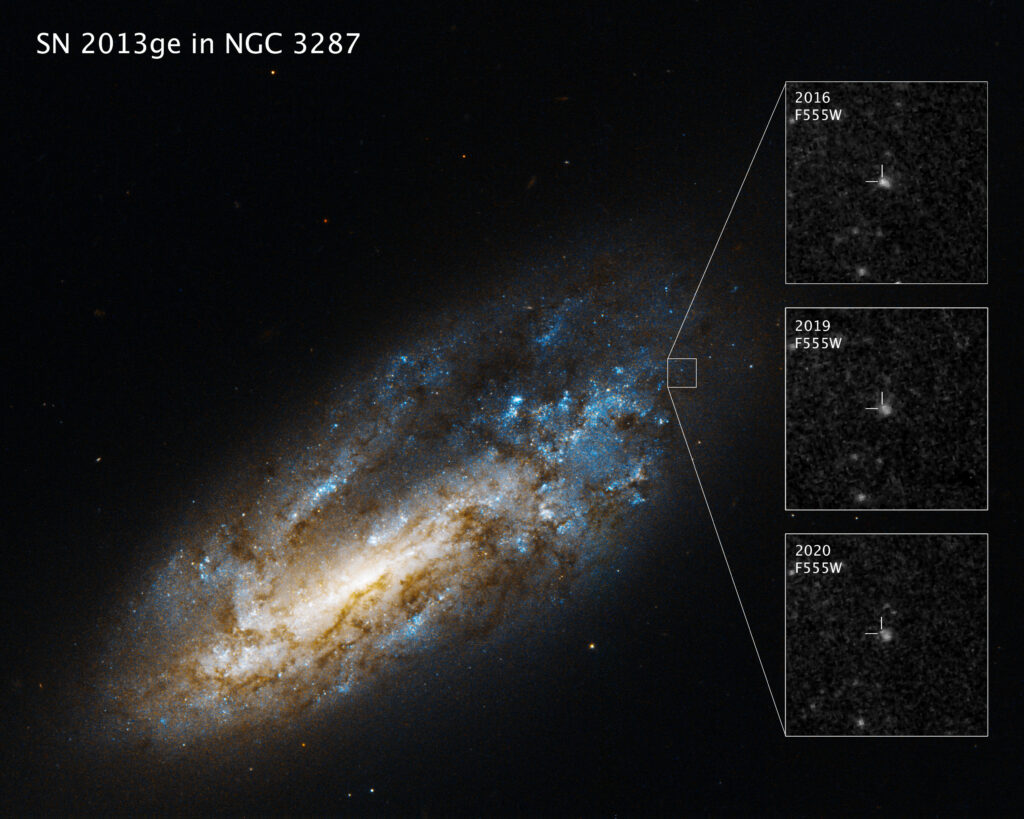The Hubble Space Telescope managed to get an image of a star that survived the transformation into a supernova of its companion. This discovery is the first for a special kind of supernova, in which the collapsed giant star lost its outer gas shell before the explosion.

In 2013, a supernova exploded in the galaxy NGC 3287 (it is located at a distance of 47 million light years from the Milky Way in the direction of the constellation Leo). The event was designated 2013ge. During the subsequent analysis of the observational data, astronomers found that the signature of the supernova completely lacked traces of hydrogen, which should have been part of the outer shell of the dead star.
This anomaly interested scientists. To solve the mystery of the missing hydrogen, they used the Hubble telescope. During several observations, it managed to fix the source of ultraviolet radiation near the supernova. While the supernova gradually lost its brightness, the brilliance of this object remained unchanged.
According to astronomers, Hubble managed to find a companion of the dead star. Apparently, before the colossal explosion, it “stole” the matter from its companion, completely absorbing its outer shell. This explains the absence of hydrogen in the supernova signature.
According to the researchers, the discovery confirms the theory that before the explosion, massive luminaires can completely lose their outer shell, which is then absorbed by their neighbors. Hubble provided the first photographic evidence of the reality of such a scenario.
According to https://esahubble.org
Follow us on Twitter to get the most interesting space news in time
https://twitter.com/ust_magazine
